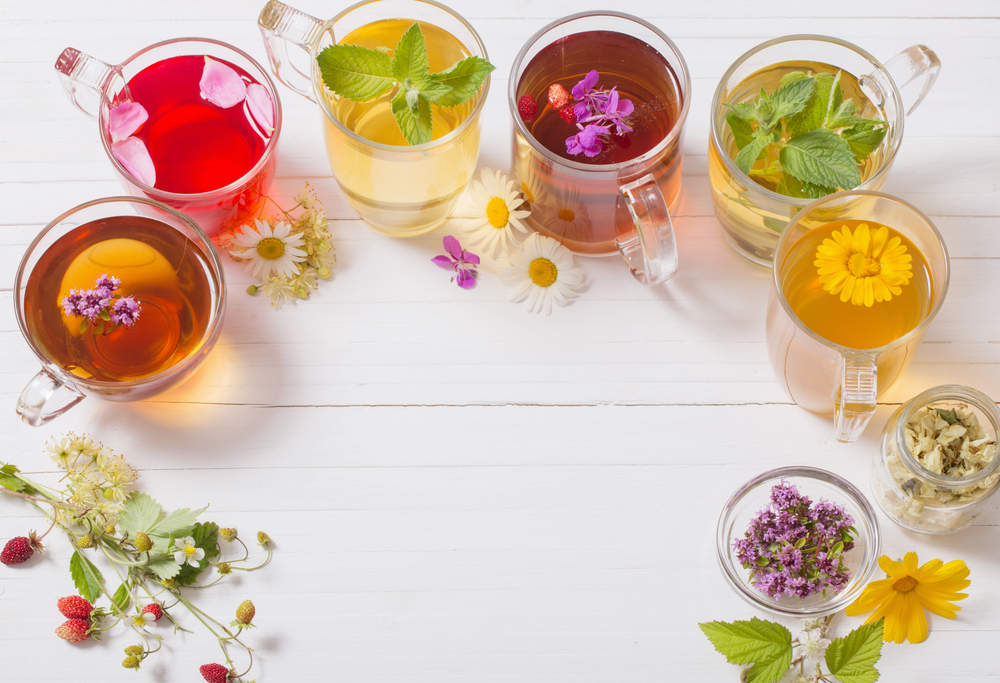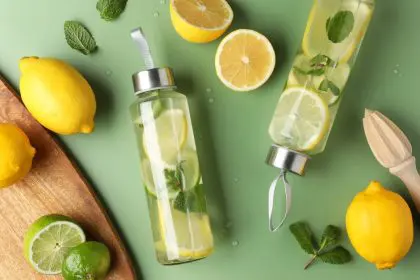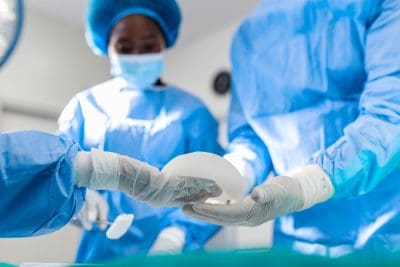Ever noticed how some months your hormones seem determined to turn you into someone you barely recognize? The mood swings, cravings, energy crashes, and uncomfortable physical symptoms can make you feel like you’re riding an emotional roller coaster you never bought tickets for. While conventional wisdom pushes prescription solutions or just “dealing with it,” there’s actually a gentler approach that women have used for centuries hiding in plain sight – flower infusions.
That’s right – certain flowers contain compounds that can help nudge your hormonal system back toward balance, often without the side effects that come with more aggressive interventions. And the best part? Many of these botanical allies might already be growing in your garden or available at your local health food store.
Why your hormones need balancing in the first place
Before diving into flower power, it helps to understand why hormonal balance is so elusive for many women. Your endocrine system is essentially a complex communication network where tiny chemical messengers – hormones – tell your body what to do and when to do it. This delicate system influences everything from your energy and mood to your metabolism and reproductive health.
Modern life throws numerous wrenches into this finely-tuned system. Stress is perhaps the biggest hormone disruptor, triggering cortisol production that can interfere with other hormones. Environmental factors like certain plastics, pesticides, and pollution contain compounds that mimic hormones in the body, creating confusion in your endocrine system.
Even your diet plays a major role, with processed foods, sugar, and certain inflammatory ingredients potentially throwing your hormones out of whack. Add in disrupted sleep patterns, constant electronic stimulation, and sedentary lifestyles, and it’s no wonder so many women experience hormonal imbalances.
These imbalances show up differently for everyone. You might experience irregular periods, troublesome PMS symptoms, mood instability, fatigue, weight changes, skin issues, or sleep disturbances. While serious hormonal conditions require medical care, many women find themselves in a frustrating middle ground – not sick enough for intensive treatment but definitely not feeling their best.
How flowers became hormonal healing superstars
Flowers aren’t just pretty faces in the plant kingdom – they’re the reproductive organs of plants, packed with bioactive compounds that influence hormonal pathways. Throughout history, women have turned to certain flowers to address reproductive and hormonal concerns, with this knowledge passed down through generations of healers and midwives.
Modern science is finally catching up to this traditional wisdom. Research has identified specific compounds in certain flowers that can influence estrogen receptors, reduce inflammation, support liver function for hormone processing, or help the body respond better to stress – all factors in hormonal balance.
The beauty of flower remedies lies in their gentle approach. Rather than forcing dramatic hormonal shifts like some medications do, most floral infusions work subtly, providing your body with compounds that support its natural balancing mechanisms. This approach often means fewer side effects and a more sustainable path to hormonal wellness.
The unexpected flower that rivals hormone medications
When most people think of hormone-balancing herbs, they picture plants like black cohosh or dong quai. But one of the most research-backed floral options actually grows as a common meadow flower across North America and Europe – red clover.
Those delicate purple-pink blossoms are packed with compounds called isoflavones, which have a mild estrogen-like effect in the body. Unlike stronger hormone medications, red clover’s isoflavones offer a gentler approach, selectively binding to certain estrogen receptors while leaving others alone.
This selective action helps explain why red clover can ease discomforts associated with both high and low estrogen states for different women. Studies show red clover may help reduce hot flashes, night sweats, and mood fluctuations, particularly during perimenopause when hormones begin their rollercoaster ride.
What makes red clover especially interesting is its dual action – it provides gentle phytoestrogens while simultaneously supporting the liver’s ability to process and eliminate excess hormones from the body. This two-pronged approach helps explain why many women report feeling more balanced after adding red clover infusions to their routine.
The mood-lifting bloom that tackles hormonal anxiety
If hormonal shifts leave you feeling anxious, irritable, or on the verge of tears, a bright yellow flower might be your new best friend. St. John’s wort flowers contain multiple compounds that gently influence your nervous system and hormonal pathways.
While this sunny flower is better known for addressing mild depression, its effects on hormonal balance are equally impressive. St. John’s wort helps regulate the hypothalamic-pituitary-adrenal axis – the body’s stress response system that dramatically impacts hormonal function.
When stress throws your hormones into chaos, St. John’s wort can help restore communication between your brain and your endocrine system. This improved communication often translates to fewer mood swings, more emotional resilience, and a greater sense of equilibrium during hormonal transitions.
Perhaps most interestingly, research suggests St. John’s wort may help normalize levels of progesterone – the calming hormone that often becomes depleted during chronic stress. This progesterone-supportive effect might explain why many women report feeling more emotionally grounded after using this floral remedy consistently.
The garden favorite that tames inflammation and period pain
That chamomile growing in your garden isn’t just for bedtime tea – it’s a powerful ally for hormonal health, particularly for women dealing with painful periods or inflammatory PMS symptoms.
The tiny white and yellow flowers contain compounds that reduce inflammation through multiple pathways in the body. Since inflammation and hormonal imbalance often create a vicious cycle – each making the other worse – chamomile’s anti-inflammatory effects can help break this cycle.
What makes chamomile particularly effective for hormonal concerns is its impact on prostaglandins – compounds involved in period pain and cramping. By modulating these inflammatory messengers, chamomile can reduce the intensity of menstrual discomfort without the side effects that sometimes come with over-the-counter pain medications.
Chamomile also contains apigenin, a compound that binds to the same brain receptors as anti-anxiety medications, but with a gentler effect. This explains why chamomile infusions can help ease the anxiety and irritability that often accompany hormonal fluctuations.
The unexpected way flower infusions differ from regular tea
You might be wondering why you can’t just drink normal flower tea to get these benefits. The answer lies in how flower infusions are prepared – a method that extracts significantly more beneficial compounds than standard tea brewing.
Traditional flower infusions involve using a larger amount of plant material steeped for a much longer time – usually at least 4-8 hours – compared to the few minutes for regular tea. This extended extraction pulls out a fuller spectrum of the beneficial compounds, including some that aren’t water-soluble in quick brewing.
The result is a more potent preparation that provides therapeutic doses of the plant’s active constituents rather than just a pleasant-tasting beverage. While regular flower tea still offers benefits, proper infusions deliver the concentration needed to genuinely influence hormonal pathways.
True flower infusions also typically use the whole flower rather than just parts, ensuring you get the full range of compounds that work synergistically together. This whole-plant approach often provides better results than isolated extracts that contain only one active ingredient.
How to make flower infusions that actually work
Creating effective flower infusions starts with quality ingredients. Whenever possible, use organic flowers to avoid the very hormone-disrupting pesticides you’re trying to counter. Fresh flowers work beautifully during growing season, while properly dried ones maintain their potency year-round.
For a basic infusion, place about one ounce of dried flowers (or double that amount if using fresh) in a heat-proof glass jar. Pour a quart of just-boiled water over the flowers, seal tightly, and wrap the jar in a towel to maintain heat. Let it steep for at least 4 hours, though many herbalists prefer overnight for maximum potency.
Strain the liquid through a fine mesh strainer, compost the spent flowers, and store your infusion in the refrigerator. Most flower infusions stay fresh for about three days, so make smaller batches if you won’t use it quickly.
Timing matters too – for best results, drink your flower infusion consistently throughout your cycle rather than just when symptoms appear. Many women find that 1-2 cups daily provides the best hormonal support, though you might need to adjust based on your body’s response.
Beyond drinking – creative ways to use flower infusions
While sipping flower infusions is the most direct approach, there are other effective ways to incorporate these botanical allies into your hormone-balancing routine.
Using flower infusions as the liquid base for smoothies masks any bitter flavors while still delivering benefits. Try freezing infusions into ice cubes to add to summer drinks or blend with frozen fruit for a refreshing hormonal-supportive treat.
Flower-infused bathing experiences allow absorption through your skin while providing aromatherapeutic benefits. Add a few cups of strong infusion to your bathwater, creating a luxurious soak that supports your endocrine system.
For targeted relief of menstrual cramps, try soaking a cloth in warm chamomile or lavender infusion and applying it directly to your lower abdomen. The heat helps the beneficial compounds absorb through your skin right where you need them most.
Some women even use flower infusions as facial tonics, helping to address the hormonal skin issues that often accompany internal imbalances. After cleansing, simply apply the cooled infusion with a cotton pad before your regular moisturizer.
When to expect results from flower infusions
Unlike stronger hormonal interventions that force immediate changes, flower infusions typically work more subtly and gradually. Many women notice initial improvements in symptoms within the first cycle of consistent use, with more significant benefits accumulating over three to six months.
Minor symptoms like mild mood changes or energy fluctuations often respond first, while more established patterns like irregular cycles or severe PMS might take longer to shift. This gradual improvement actually signals a healthier approach – your body is gently rebalancing rather than being shocked into change.
Patience and consistency are key with botanical approaches to hormonal health. The women who see the most impressive results are those who incorporate flower infusions as part of a daily wellness routine rather than using them sporadically when symptoms flare.
It’s also worth noting that flower infusions work best as part of a broader hormonal support plan that includes stress management, nutritional support, adequate sleep, and appropriate exercise. When combined with these foundational elements, floral remedies can help create lasting hormonal balance rather than just temporary symptom relief.
The natural world offers remarkable tools for supporting our complex hormonal systems. Flower infusions represent some of the gentlest yet most effective options – botanical allies that have supported women’s wellbeing for generations. By bringing these floral supports into your modern routine, you tap into both traditional wisdom and emerging science on the path to hormonal harmony.

















